CarEdge saved me over 4,500 dollars on a brand new Honda Pilot. I can't say thank you enough.
Price intelligence
Find a wide range of vehicle listings with market insights on new and used listings near you.


Help us personalize your CarEdge experience — it only takes a second.
Your answers help us personalize your CarEdge journey — we’ll follow up with tips and next steps that match your buying timeline.

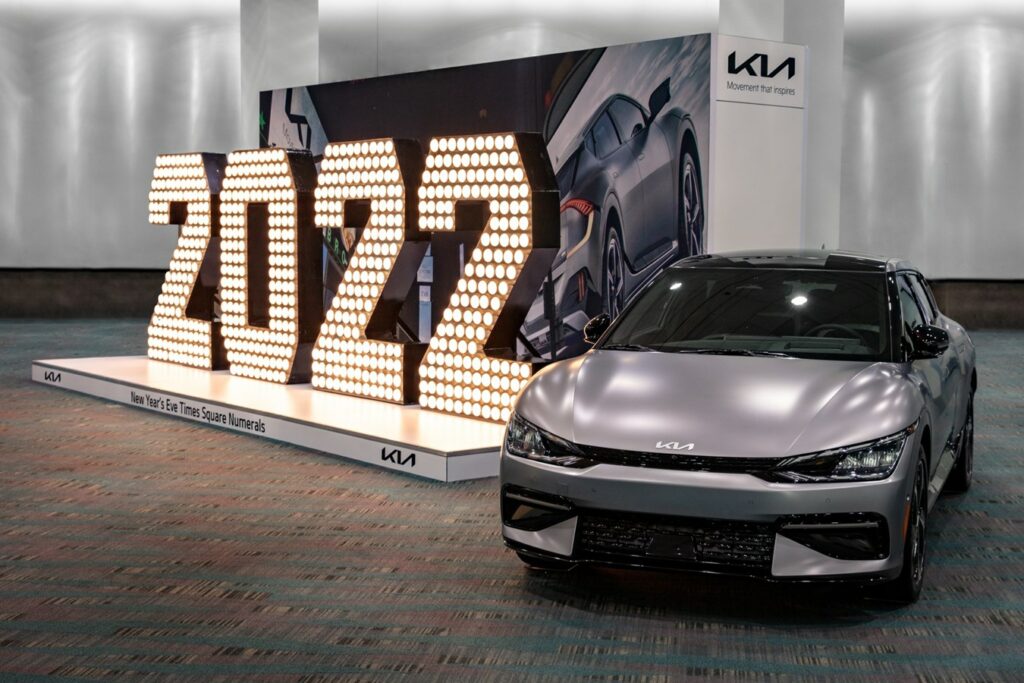
Update 1/25/22: At last, Kia has announced pricing for the 2022 EV6. The base EV6 ‘Light’ starts at $40,900, plus a destination fee of $1,215 for a total entry price of $42,115 for 2022. The EV6 does qualify for up to $7,500 in federal tax credits. Will dealer markups plague the EV6 as much as they have with the Hyundai IONIQ 5? We’ll have to wait and see. Deliveries start in the coming weeks, with the EV6 being available in all 50 states.
Here’s the full price breakdown for the 2022 Kia EV6:
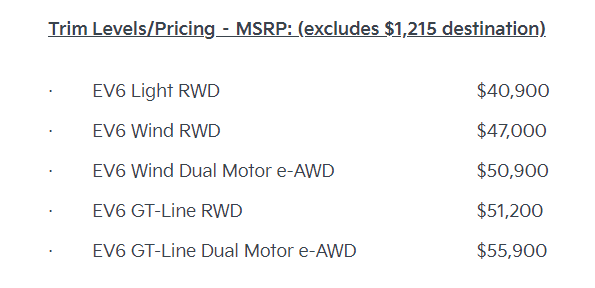
If you’re a fan of the impressive range and charging figures of Hyundai’s new IONIQ 5 but don’t quite get the styling, maybe it’s sibling, the 2022 Kia EV6, is the electric auto for you. After making it’s official American debut at the 2021 LA Auto Show, this sleek electric crossover is slated to hit American roads within months. The new year brings so many more EVs to the market. Here’s what makes the Kia EV6 so distinctive among its peers in the crowded electric crossover segment.
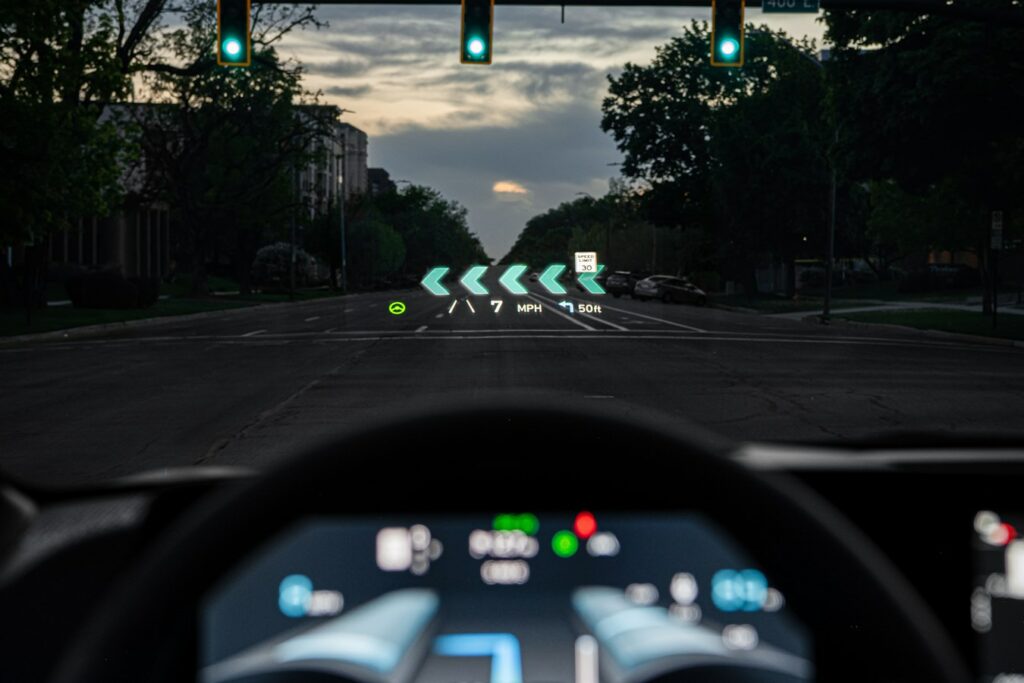
The 2022 Kia EV6 is built on the new e-GMP electric platform engineered by Kia and Hyundai to power their vehicles for the next several years. Previously, Kia EVs like the 2021 Kia eNiro were merely EVs adapted to a chassis engineered for a combustion vehicle. This all-new platform offers decent efficiency and range, and exceptional fast-charging speeds. We’re talking even better than Tesla! In early 2022, only the Porsche Taycan, Lucid Air and Hyundai’s IONIQ 5 are capable of charging at 800 volts. Soon, the EV6 will join them.
Considering that nearly all variants of the Porsche and Lucid cost over $100,000, it’s amazing how far Kia has come to be a leading innovator in the industry. For the 2022 Kia EV6, charging from 10% to 80% (adding about 200 miles of range) takes just 18 minutes. Early tests at InsideEVs show a peak charging rate of 239 kW at public level 3 DC fast chargers. Those are worthy bragging rights for Kia!
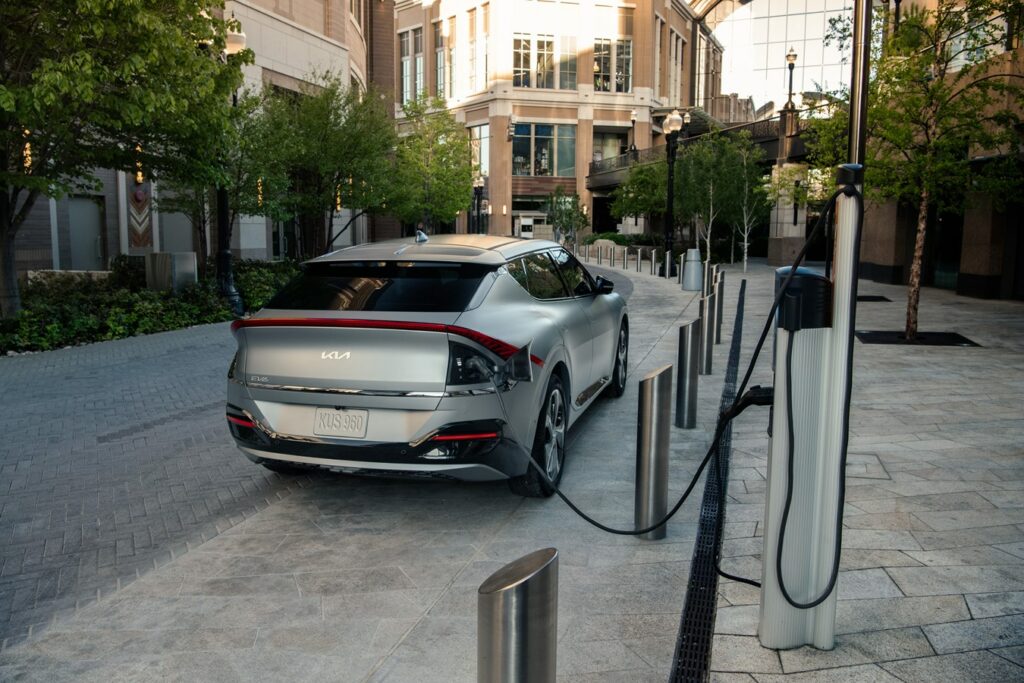
Over 80% of EV charging is done at home with level 1 or 2 chargers. Some drivers rarely ever use level 3 fast chargers. With a 240 volt dryer outlet, the EV6 can charge from empty to full in 7 hours. Without giving it much thought, that may sound like a long wait. How many hours each night does your car sit in your garage or driveway? With EVs, most drivers wake up with a full ‘tank’ of electricity every single morning. It’s just like plugging in your phone when you hit the hay. Plus, electricity is much cheaper than gasoline. With myth-busting charging speeds both at home and on the road, the Kia EV6 will help turn the tide in the battle between gasoline and electricity.
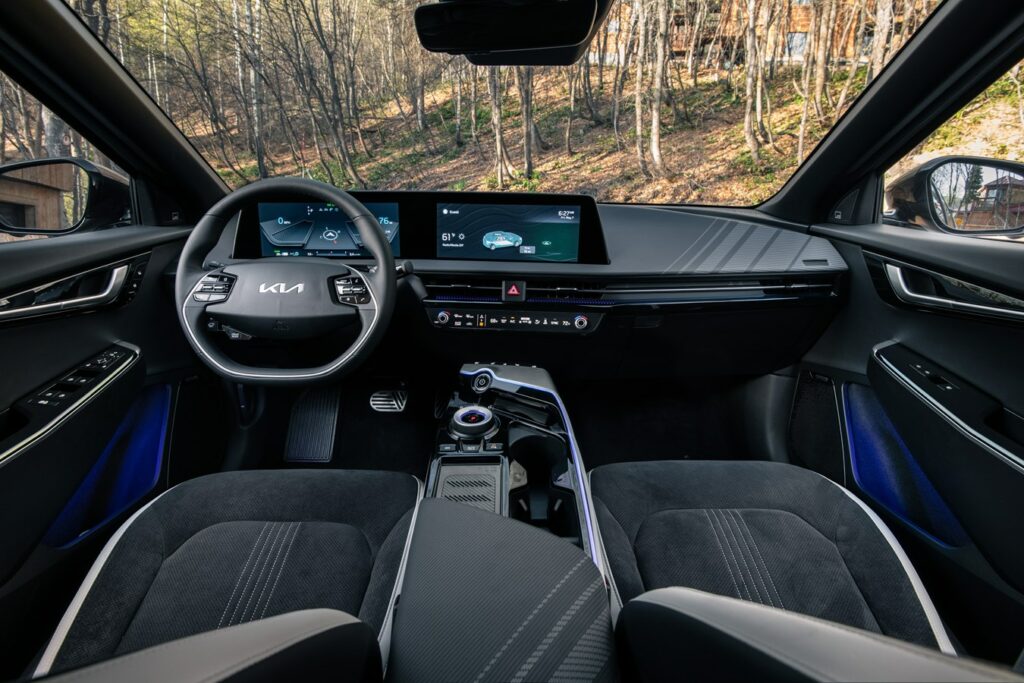
The 2022 Kia EV6 has a premium feel to it, and that’s something we’re still learning to expect from Kia. If someone told me back in 2006 that in 2022, Kia would be making one of the most sought-after electric vehicles on the market, I’d be skeptical. But stepping inside the EV6 welcomes drivers and passengers alike to a sense of spaciousness. The cabin is open and airy, yet the driver’s seat and surrounding controls remain driver-focused.
Cargo room is generous at 27.7 cubic feet, or 53.5 cu. Ft. with the rear seats down. Rear passengers have ample room, and it’s slightly more than you’d expect in a traditional crossover. However, the 61” height of the vehicle is two inches shorter than its Hyundai sibling. The Hyundai IONIQ 5 has a bit more room for rear passengers.
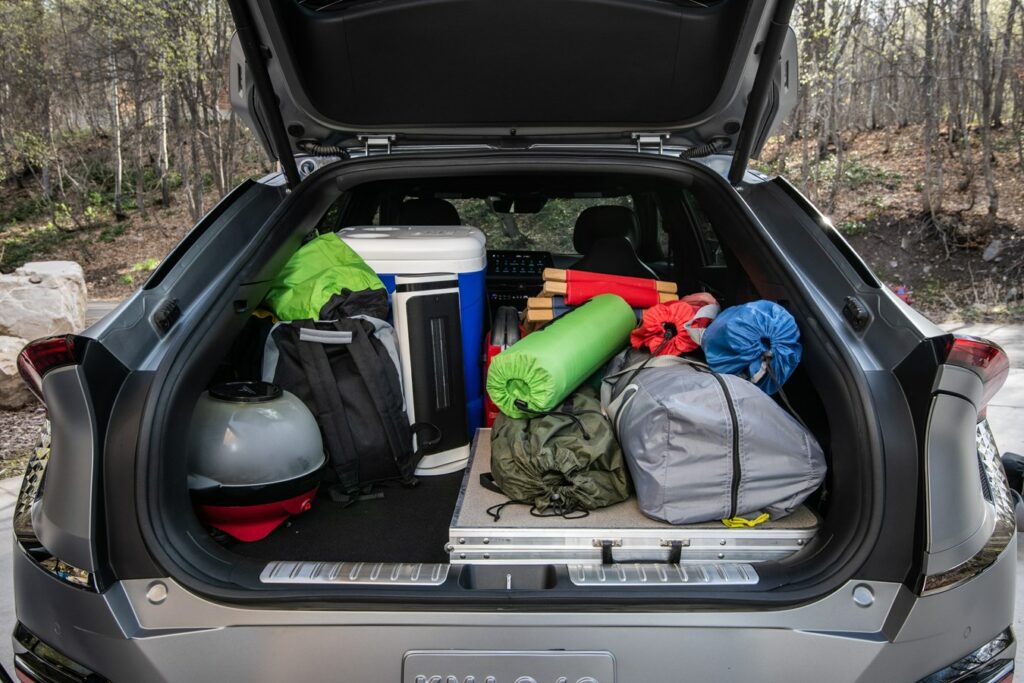
The EV6’s front dash consists of dual high-definition 12.3” screens, one for infotainment and another for the instrument cluster. Higher trims also include an augmented reality heads-up display that projects driving directions and basic info onto the windshield within the driver’s line of sight.
Kia is proud of the ambiance they’ve created in the EV6, and they highlight the intuitive user experience. “Convenience features such as keyless entry with touch-sensitive entry buttons, programmable driver profiles, relaxation seats and ergonomic design create an experience that puts the driver first. From the automatic flush handles that emerge from the car body, through to the intuitive touch-sensitive interfaces and the Augmented Reality head-up display, every journey in EV6 is designed to improve the human-machine interaction and promote a sense of well-being.”
The EV6’s 77.4 kWh lithium-ion battery is produced by SK Innovation, a leading manufacturer of batteries that also supplies Ford. With a curb weight of 4255 pounds, the 310-mile EPA rated range of the 2022 Kia EV6 is very good. That works out to 117 mpg-equivalent on a per unit of energy basis. That’s what you can expect from the rear-wheel drive version, which produces 225 horsepower (168 kW) and 258 lb-ft of torque, or 0-60 mph in 7.3 seconds. Adding an additional motor to the front increases power to 313 hp and a 0-60 time of 5.1 seconds, but range drops to 274 miles on a charge. Unlike combustion-powered vehicles, EVs get better range in city driving. The EV6 will likely get well over 300 miles of range cruising around town.
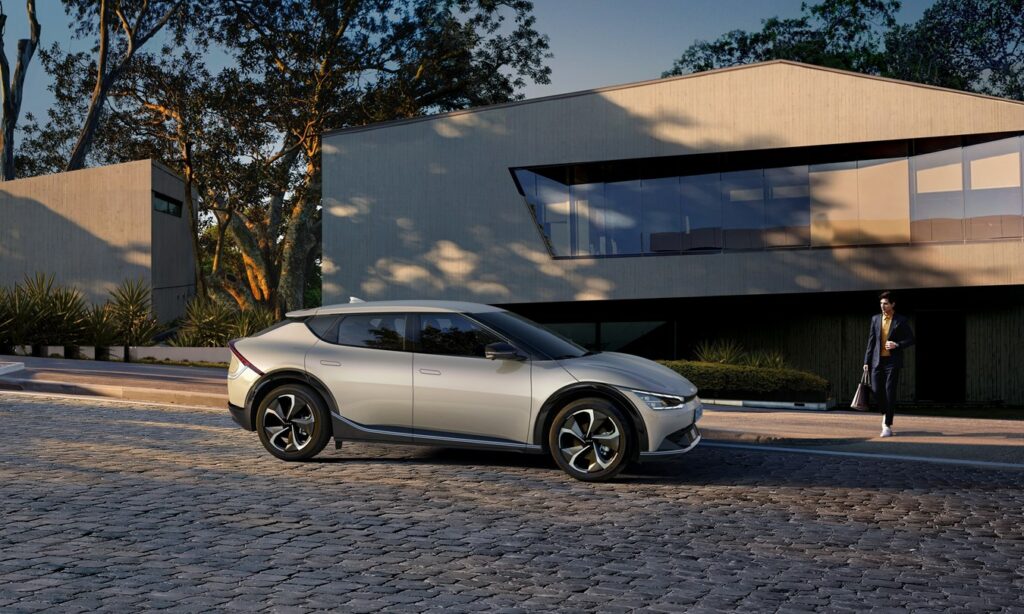
Kia has announced US pricing, and it’s just a hair above the Hyundai IONIQ 5’s MSRPs. Here’s what we know:

The Kia EV6 qualifies for the federal EV tax credit for up to $7,500, depending on tax liability. If you owe at least $7,500 in federal taxes each year, you can subtract that amount from these prices. For many buyers, the EV6 is effectively starting at just under $35,000.
Once again, as we’ve seen with the top-trim Hyundai IONIQ 5, Ford Mustang Mach-E and Volkswagen ID.4, automakers seem to be cornering buyers into a familiar shopping comparison with Tesla. Do buyers want a base-trim Tesla Model Y for about $60,000, or a fully-loaded alternative from a legacy OEM?
As of January 2022, we know that the ‘EX+’ trim options include rear-wheel drive, 310 miles of range, premium sound, heated and ventilated seats, and an onboard power generator that can power laptops, cooking devices, party lights or whatever else you need to plug in. The more premium GT line tacks on a large power sunroof, surround-view and blind-spot monitoring, heads-up display, park assist and highway drive assist, all while riding around on 20-inch wheels.
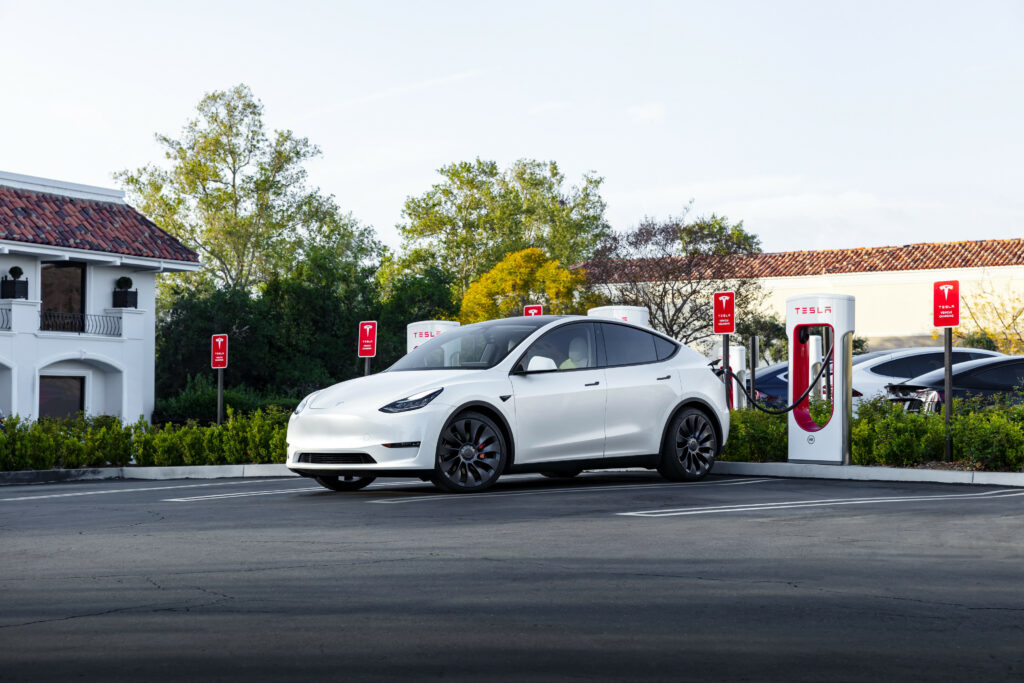
With a starting MSRP around $42,000 with destination, the 2022 EV6 will be a real contender for crossover market share. Early access owners in the UK love their cars, and many point out the advantages over the elephant in the room (Tesla). While Tesla’s Model 3 and Model Y both have an ultra-minimalist dash and plain interior, the EV6 is full of gadgets and customization. Looking at the top GT-Line trims, buyers could be cross-shopping the Model Y and EV6 for roughly the same price. One big difference: Kia EVs still qualify for the current $7,500 federal EV tax credit. Which would you prefer, the Tesla or the new Kia?
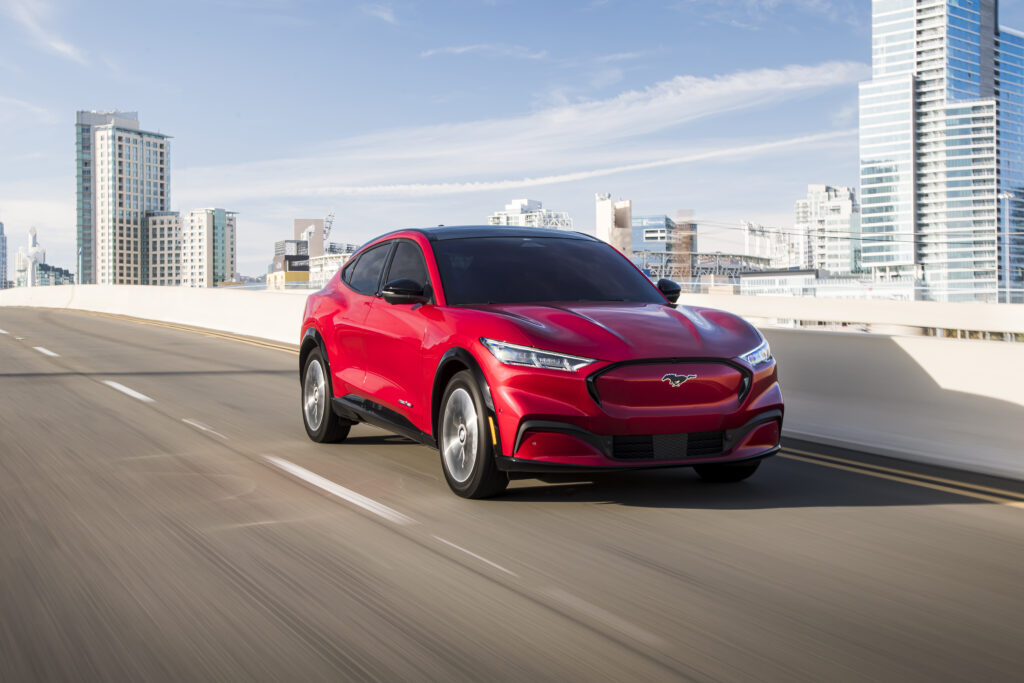
Another likely challenger is the Ford Mustang Mach-E, which sold 24,791 units in America through November 2021. The Mach-E has a few more feet of cargo capacity, but many reviewers note that the ride is quite firm. Shoppers looking for a softer ride and more leisurely handling will probably prefer the EV6. Those looking for a sporty Model Y alternative may find what they desire in the Mach-E. Range figures appear to be similar between the two, but the Kia has a clear advantage when it comes to charging time.
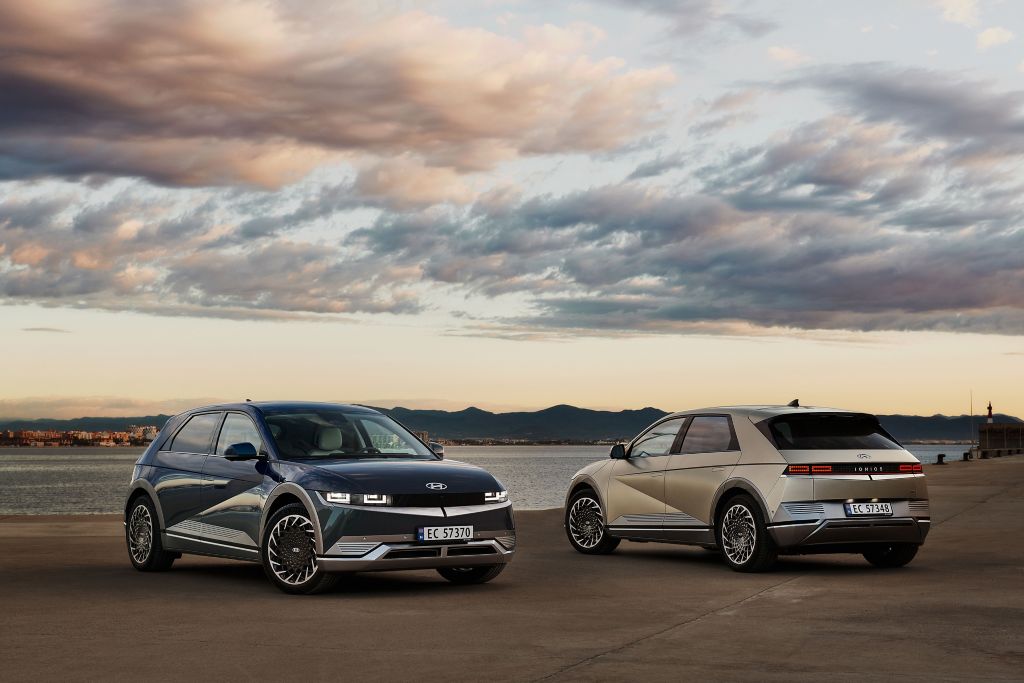
We do know a lot about the EV6’s e-GMP platform sibling, the 2022 Hyundai IONIQ 5. With a starting price of just $40,925 and roughly the same charging and range specs as what the EV6 has to offer, buyers will find that both interior and exterior styling language is the big differentiator. Those who love a retro look with a hatchback flare will instantly fall in love with the IONIQ 5. If you prefer a sleek, aggressive-looking EV that is a family-mover in disguise, the Kia may suit your needs. And then, there’s the supply factor. In the end, whichever OEM can ship more vehicles to America may win out in terms of sales.
Like a few other EVs, ‘early 2022’ is about all we know for now. Select dealerships have a pre-ordering process set up, so it might be worth a stop by your local dealership. If you’re hoping to drive an EV6 home in 2022, bear in mind the threat of additional dealer markups. If you are able to place an order, have in writing the out-the-door price your dealer will commit to. Our team of consumer advocates at CarEdge is ready to help you through this very important process. Don’t let surprise add-ons and ‘market adjustments’ keep you from getting into the driver’s seat.
With some automakers chasing Tesla and others stuck with heartless compliance EVs and struggling to get with the game, it’s refreshing to see EVs blossoming into compelling, fun-to-drive vehicles. The one big problem we see is the prohibitive price. EVs remain out of reach for many, and it doesn’t appear that the EV6 will help on that front. But then again, it doesn’t look like a ‘cheap’ car, so buyers will have to decide if it’s worth the price.
The Kia EV6 brings a new perspective to the crossover EV segment, and it’s one that consumers should definitely check out. The level of detail that the EV6 presents in both the driver-focused interior and eye-catching exterior serves as a reminder that not everything needs to aspire to Tesla. Kia is showing that our electric future is not set in stone. There’s still plenty of room for innovation as we charge ahead.
What do you prefer, the Hyundai IONIQ 5 or the Kia EV6? Let us know in the comments, or hop on over to the CarEdge Community Forum at caredge.kinsta.cloud.
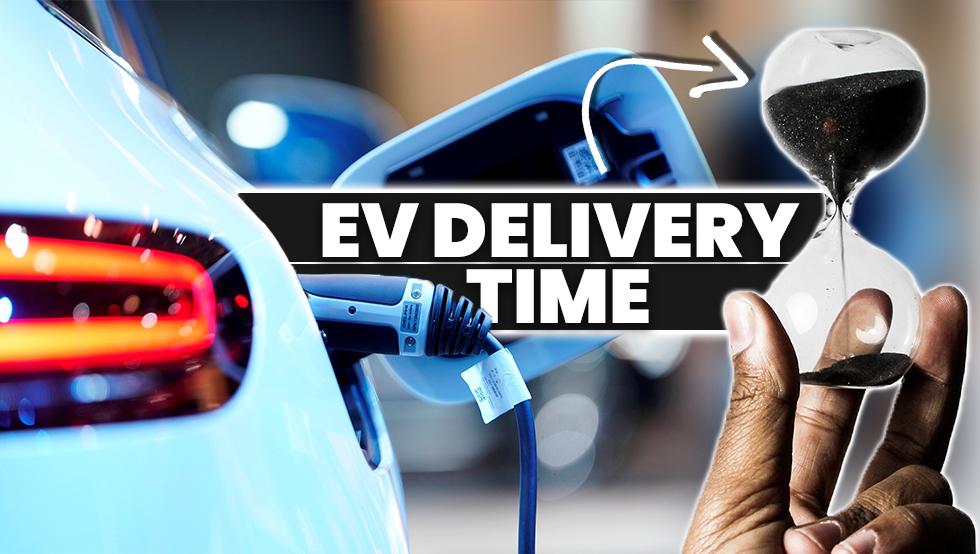

(Updated for Summer 2022)
As anyone who’s fallen head over heels for one of the many 2022 electric vehicles and clicked that ‘Order’ button can attest, just because you can order an EV in 2022 doesn’t mean you can drive it home this year. This was a problem I faced myself, but I finally broke the code and got a Hyundai IONIQ 5 at MSRP (here’s how).
Soon after I began my online car search, it became clear that if I wanted a brand-new vehicle, my options were limited by availability. To make the most of the situation, I thought I’d share what I’ve learned about the availability and estimated delivery times for EVs on the market today. Here’s what we know as we kick off the new year.
Note: These are fully-electric models that can either be ordered now or purchased at a dealership today. Many more have been announced but are not yet officially available.
| Make | Model | Class | Starting MSRP | Estimated Delivery/Lot Availability* |
|---|---|---|---|---|
| Audi | e-tron | crossover SUV | $65,900 | Available Now |
| Audi | Q4 e-tron | crossover SUV | $43,900 | Available Now |
| Audi | RS e-tron GT | sedan | $103,445 | Available Now |
| BMW | iX | SUV | $88,050 | Mid-2022 |
| BMW | i4 | sedan | $55,400 | Mid-2022 |
| Cadillac | Lyriq | SUV | $62,990 | Late-2022 |
| Chevrolet | Bolt | hatchback | $31,000 | Available Now |
| Chevrolet | Bolt EUV | crossover SUV | $33,500 | Available Now |
| Fisker | Ocean | crossover SUV | $37,499 | 2023 |
| Ford | Mustang Mach-E | crossover SUV | $43,895 | Available Now |
| Ford | F-150 Lightning | truck | $39,974 | 2023-2024 |
| GMC | Hummer EV | truck | $99,995 | Mid-to-late 2022 |
| Hyundai | IONIQ | crossover SUV | $33,245 | Available Now (Discontinued) |
| Hyundai | IONIQ 5 | crossover SUV | $43,650 | Available Now |
| Hyundai | Kona | crossover SUV | $34,000 | Available Now |
| Jaguar | I-Pace | crossover SUV | $69,900 | Available Now |
| Kia | Niro | crossover SUV | $39,990 | Available Now |
| Kia | EV6 | crossover SUV | $42,115 | Available Now |
| Lucid | Air | sedan | $77,400 | Mid-2022 |
| Mazda | MX-30 | crossover SUV | $33,470 | 2022 - CA Only |
| Mercedes | EQS | sedan | $102,310 | Available Now |
| Mercedes | EQB | SUV | ~$55,000 | Late 2022 |
| Nissan | Leaf | hatchback | $27,400 | Available Now |
| Nissan | Ariya | crossover SUV | $47,125 | Late 2022 |
| Polestar | Polestar 2 | sedan | $45,900 | Available Now |
| Porsche | Taycan | sedan | $82,700 | Available Now |
| Rivian | R1T | truck | $67,500 | 2023 |
| Rivian | R1S | SUV | $70,000 | 2023 |
| Subaru | Solterra | crossover SUV | $46,220 | Mid-to-late 2022 |
| Tesla | Model S | sedan | $94,990 | Late 2022 - 2023 |
| Tesla | Model 3 | sedan | $46,990 | Mid-to-late 2022 |
| Tesla | Model X | SUV | $104,990 | 2023 |
| Tesla | Model Y | crossover SUV | $62,990 | Late 2022 - 2023 |
| Toyota | bZ4X | crossover SUV | $43,215 | Mid-to-late 2022 |
| Volkswagen | ID.4 | crossover SUV | $40,760 | Mid-2022 |
| Volvo | XC40 Recharge | crossover SUV | $55,300 | Available Now |
| *For a vehicle ordered in May 2022, unless there's existing dealership supply. |
A few things might stand out to you on this list. Not a lot of options are available if you need a new vehicle right now. VW Group’s new EVs are available at many dealerships, although there are reports of major dealer markups. It’s quite easy to find EVs of the previous generation on dealer lots. Think Kia eNiro, Hyundai Kona EV, Nissan Leaf and the like.
The vast majority of 2022 electric vehicles are crossovers. No surprise there given the sales trends over the past decade. Honda doesn’t have a single EV arriving in the North American market until the 2024 Prologue electric SUV. That is surprising considering the popularity and good reputation of the brand. What will it take for automakers to catch up to demand? An end to the chip shortage would be a great step in the right direction. There’s also the supply versus demand factor. Ford, Rivian, Tesla and VW are all swamped with orders well into 2022, and even into 2023. All except Tesla are EV newcomers who are facing the same production ramp-up struggles that Tesla just barely survived a few years ago. We’ll update this page regularly as more information becomes available, so save it to your bookmarks!
Did we miss anything? Let us know in the comments below, or shoot an email to [email protected].

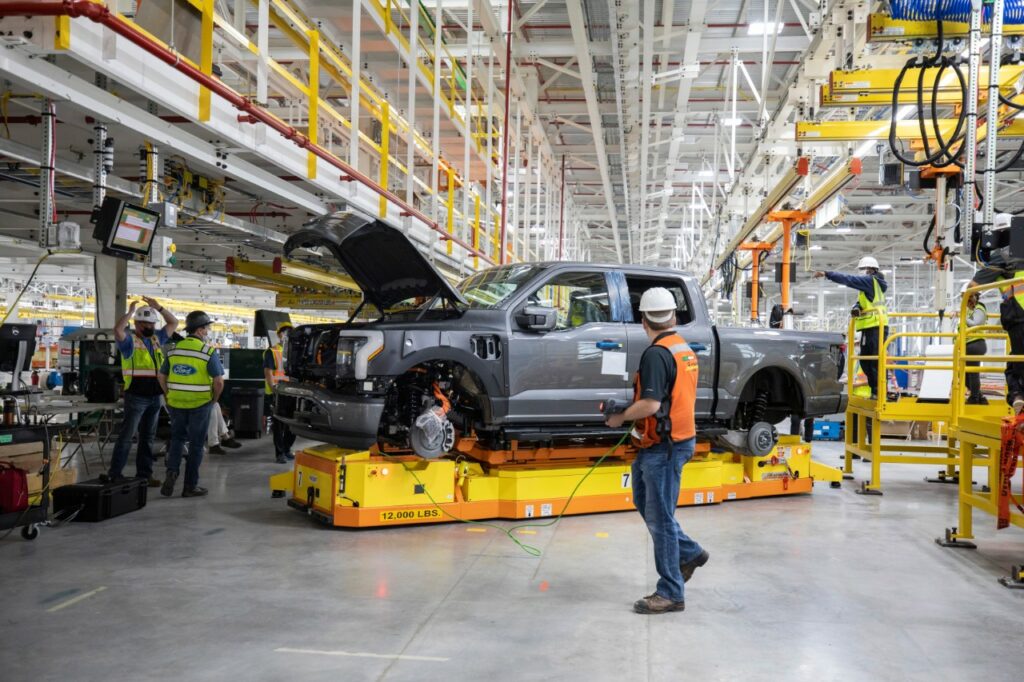
This year’s LA Auto Show marks a turning point for the auto industry. What seemed unlikely a decade ago is now very real: like it or not, OEMs are committed to electrification. There are a whole host of reasons for the shift, from international climate initiatives and clean transport incentives, to simply responding to Tesla overtaking market share. Every automaker has its own strategy. Some are going it alone, while many are laying the groundwork for new partnerships with competitors. And as 2021 comes to a close, all OEMs have at least this in common: they’re planning to electrify and they’re spending a LOT of money doing it. Here are the latest updates on the major players in the North American auto market.
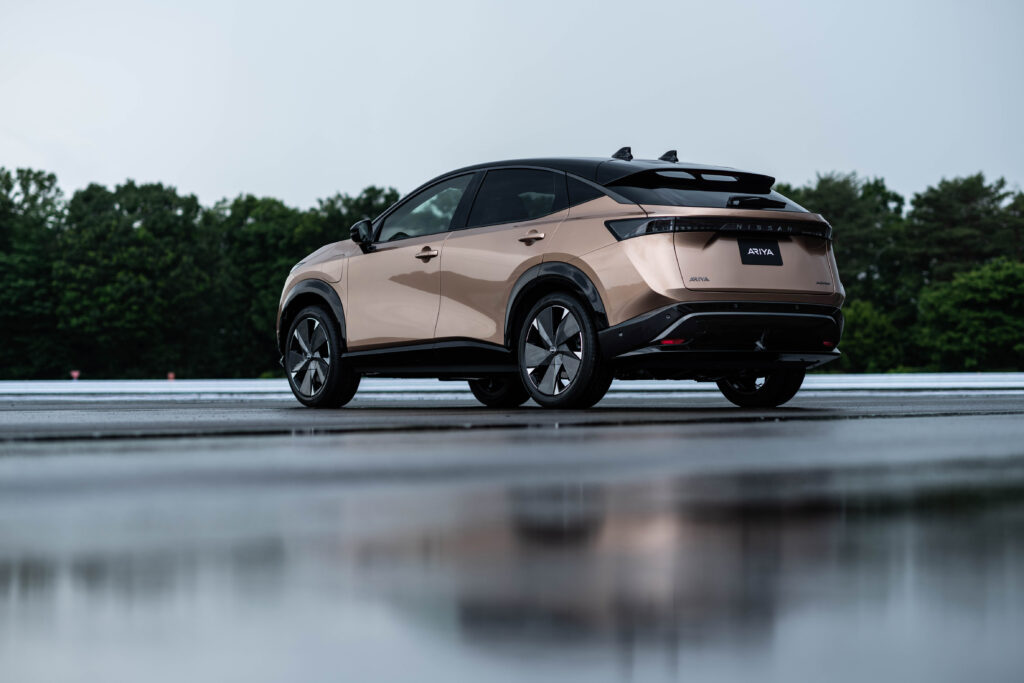
The 2011 Nissan Leaf changed the world and spurred interest in electrified transportation. The Leaf led EV sales for several years before falling behind the likes of the Chevrolet Bolt and the Tesla lineup. The turmoil of Nissan’s leadership surely didn’t do electrification any favors. But here we are, a decade after they brought EVs to the masses, and Nissan has unveiled the successor to the Leaf, the 2023 Nissan Ariya. This compact crossover is the start of something bigger.
The Japanese OEM just announced ‘Ambition 2030’, a roadmap for electrification. In just five years time, Nissan says it will spend at least $17.6 billion in EVs and battery tech. That includes the engineering and production of its own solid-state battery by 2028, which would be a major feat for any automaker. Another part of the investment is a new $1.3 billion electric vehicle hub in England where it will build an all-electric crossover. By 2030, Nissan says that half of their lineup will be EVs. Will it be enough to reclaim EV dominance?
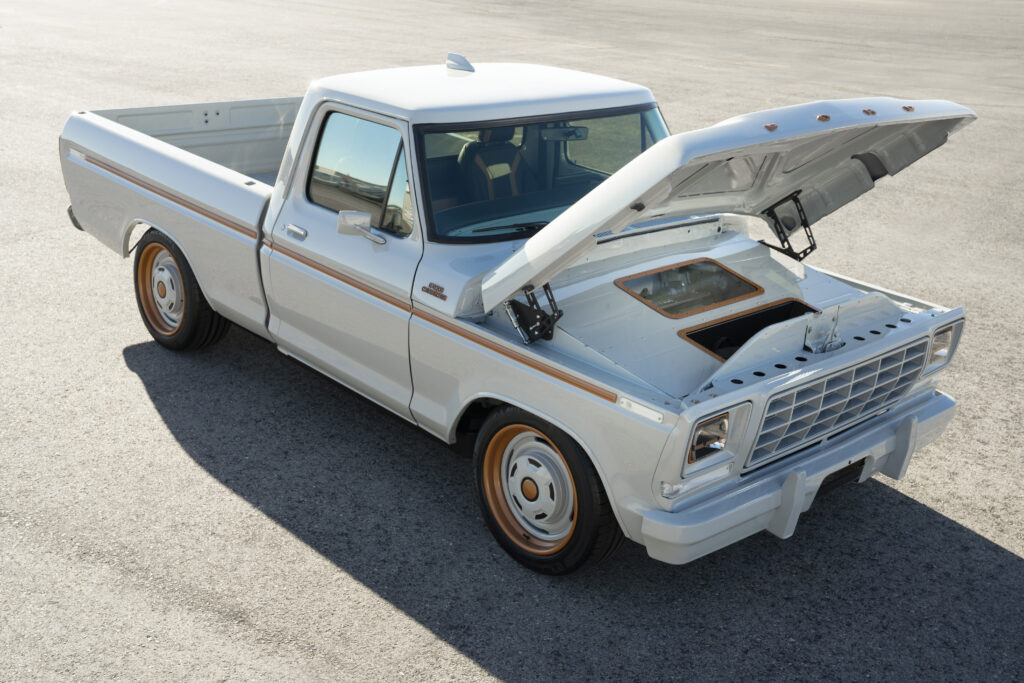
Ford is determined to catch up to Tesla, and they’re not afraid to say that publicly. Having acknowledged their status as an EV underdog, Ford isn’t making any excuses. Instead, they’re writing checks. The Detroit giant is spending $22 billion through 2025 to electrify its lineup, starting with the 2021 Mustang Mach-E, a controversially-named top seller and Tesla Model Y competitor.
Next up, the F-150 Lightning. Ford is so confident in its electrification strategy that it’s giving its best-selling model the EV treatment. With over 200,000 reservations in the books, it looks like Ford has their work laid out for them. Ford says that F-150 Lightning reservations placed today may not be delivered until 2024 due to order backlogs.
In an even greater leap towards an EV future, Ford announced BlueOval City, which they call Ford’s “largest, most advanced, most efficient auto production complex.” The massive facility will be constructed on a nearly 6-square-mile site in Tennessee. It will produce F-series electric trucks and Ford’s future battery platforms. Moreover, a new BlueOval SK Battery Park is to be built in Kentucky with the goal of powering a new lineup of Ford and Lincoln EVs.
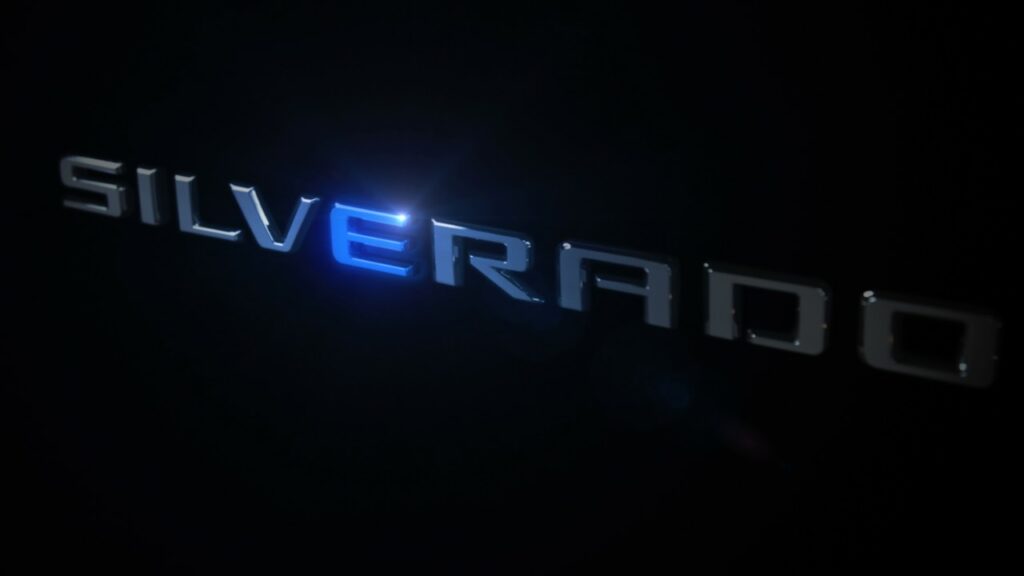
GM plans to stop selling combustion vehicles by 2035, so that means one of two things: GM is either going all-in with EVs, or they plan to go out of business. Jokes aside, the General is playing the long game. GM has been investing heavily in the development of its proprietary Ultium battery technology as it prepares to launch a slew of EVs.
Unless you’ve been living under an automotive rock for the past year, you probably know that the Chevy Bolt has been going through some rough times to say the least. Battery fires have been traced to problems with how LG Energy Solutions engineered the battery pack for GM. There’s a stop-sale on new Bolt’s, and all Bolt owners are advised to park away from buildings and limit charging to 80%. The automaker has to spend $1.8 billion fixing the Bolt recall, so I’m sure they will want to avoid similar problems going forward. GM’s Bolt blunder is certainly going to turn a lot of folks away from EVs, so here’s hoping that their new Ultium platform can convince the public that their EVs are worth a test drive.
2021 has arguably been the turning point for the automotive industry. Now that the future points towards electrification, OEMs like GM are increasing their planned investments in EVs and their infrastructure ecosystem. For example, GM recently announced that they are increasing their commitment to develop EVs and autonomous vehicles by $8 billion additional dollars by 2025, amounting to a total commitment of $35 billion. In a recent press release, GM shared that they intend for combustion-powered sales to fuel their growth strategy. The roadmap includes working with partners to build new battery facilities, creating a charging network, and converting the entire Detroit-Hamtramck Assembly center into ‘Factory Zero’, an all-EV production center with over 4 million square feet.
The Cadillac brand will be exclusively electric by 2030, and the highly-praised Cadillac Lyric EV is almost here. And of course there’s the $100,000+ GMC Hummer EV coming out next year. But we’ll know Chevrolet is serious about EVs when there’s an electric Silverado, which is scheduled to arrive in 2023-2024. The automaker is relying on the new Ultium batteries to produce a desirable electric truck with a range of up to 400 miles on a charge at a compelling price point.
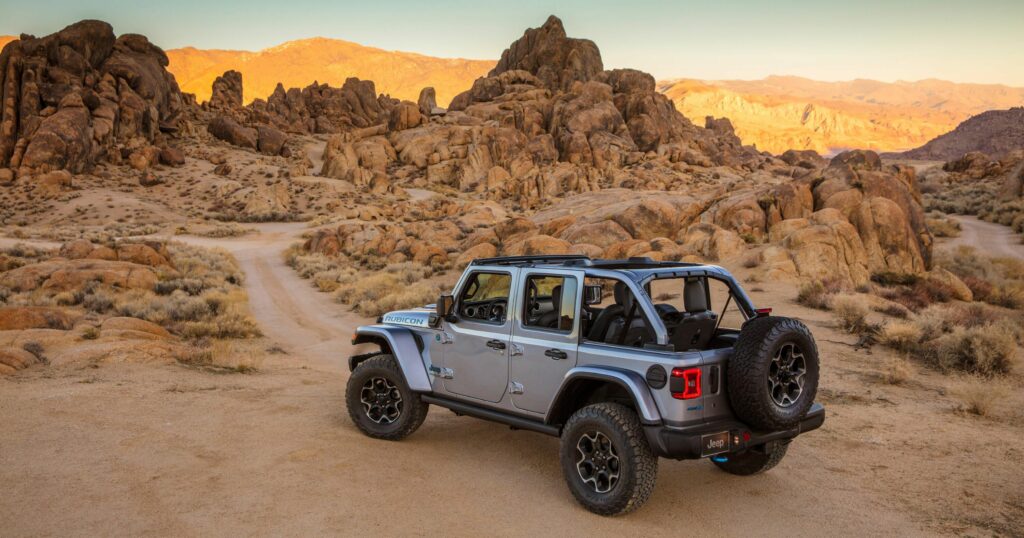
Now that Fiat Chrysler Automobiles (FCA) and PSA Group (European brands Peugeot, Citroen and more) have merged to create Stellantis, the conglomerate is trying to agree on a path forward towards electrification. Stellantis CEO Carlos Tavares recently complained to Reuters about the added costs of engineering and building EVs, which isn’t surprising considering that subsidiary Ferrari publicly says they aren’t very interested in electrification.
Despite the dread of some of the leadership, Stellantis is far more committed to EVs than FCA was on its own. At ‘Stellantis EV Day 2021’, the group announced $35.5 billion in EV investment through 2025. Every Jeep will have an electrified option by 2025, and an electric Ram 1500 pickup truck and Dodge performance EV will hit the roads by the same year. Their target for North America is 40% electrification (including plug-in hybrids) in 2025.
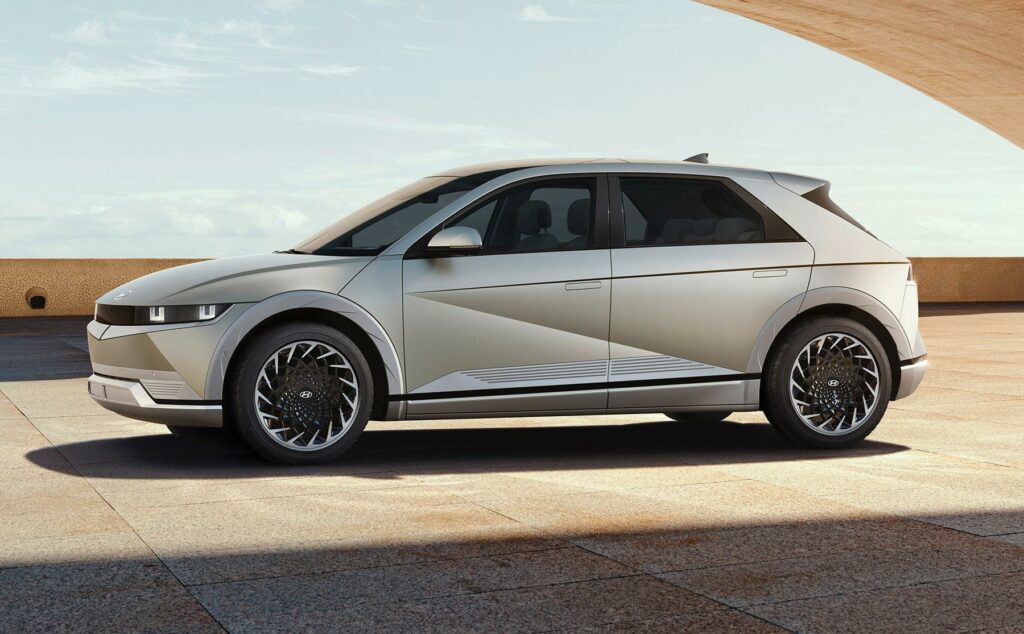
Not only is Hyundai-Kia on a roll, they are investing heavily in American manufacturing for their rapidly electrifying lineup. They recently shared a $7.4 billion investment in America between now and 2025, with the goal of producing American-made battery electric vehicles. Hyundai-Kia is also investing heavily in autonomous vehicle development and urban air mobility. You know, as in flying cars. By 2025, they plan to have 23 EVs and hydrogen fuel cell vehicles on the market, with more to follow. So there’s a lot to look forward to from the group.
Hyundai’s retro-inspired yet very futuristic IONIQ 5 has garnered attention at the 2021 LA Auto Show along with its sibling, the Kia EV6. Hyundai’s Kona EV has sold well, but it doesn’t turn any heads. The next generation of electric Hyundai’s and Kia’s are sure to change that if the Kia EV9 and Hyundai IONIQ 7 are any indication of what’s to come.
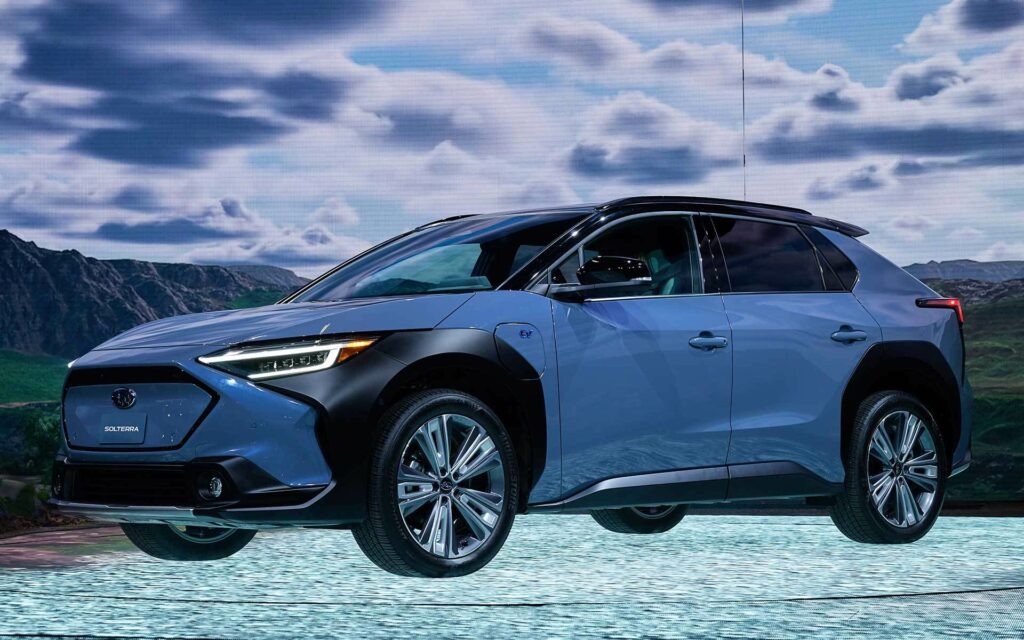
Honda doesn’t have a single dedicated EV in the North American market, but has had success with its funky Honda ‘e’ in Europe. Nevertheless, Honda has big plans. CEO Toshihiro Mibe recently shared that the automaker is aiming for 2040 vehicle sales to be 100% EVs and hydrogen fuel cell vehicles. They expect that figure to reach 40% by 2030. As far as investment goes, Honda is putting their money where their mouth is and investing $46.3 billion in research and development initiatives, including electrification, over the next six years. But there’s a long way to go. In 2020, Honda sold 4.46 million cars globally, but only 14,000 were electric.
When will Honda begin to make a splash in the American EV market? Well, no sooner than late 2023. Honda’s pride and joy is the upcoming 2024 Prologue EV, a SUV that will use GM’s Ultium battery platform. You read that right. Honda is depending on GM to deliver the most important part of their most important car of the decade. The EVs in development will surely have Acura-branded counterparts too.
In 2025, Mazda plans to introduce a unique EV platform, ‘SkyActive EV Scalable Architecture.’ For now, Mazda only intends to bring three full EVs to the American market by 2025. The company’s first, the MX-30, is out now in California and includes a very insufficient estimated range of 100 miles. For perspective, a 2013 Nissan Leaf got better miles than that. We’ll see if Mazda gets serious about EVs with an accelerated timeline.
Subaru has been receiving plenty of attention as of late for its fruitful collaboration with Toyota to produce a new EV platform that both automakers will use for the time being. The 2021 LA Auto Show has featured the unveiling of the first all-electric all-wheel drive Subaru, the 2023 Subaru Solterra. It’s the sister to Toyota’s new bZ4X EV. Subaru is playing a bit of catch up in the electrified all-wheel drive space, but they have a plan. They recently announced plans for a new $272 million dollar R&D center in Tokyo that will employ some 2,800 people with the goal of facilitating the push to EVs.
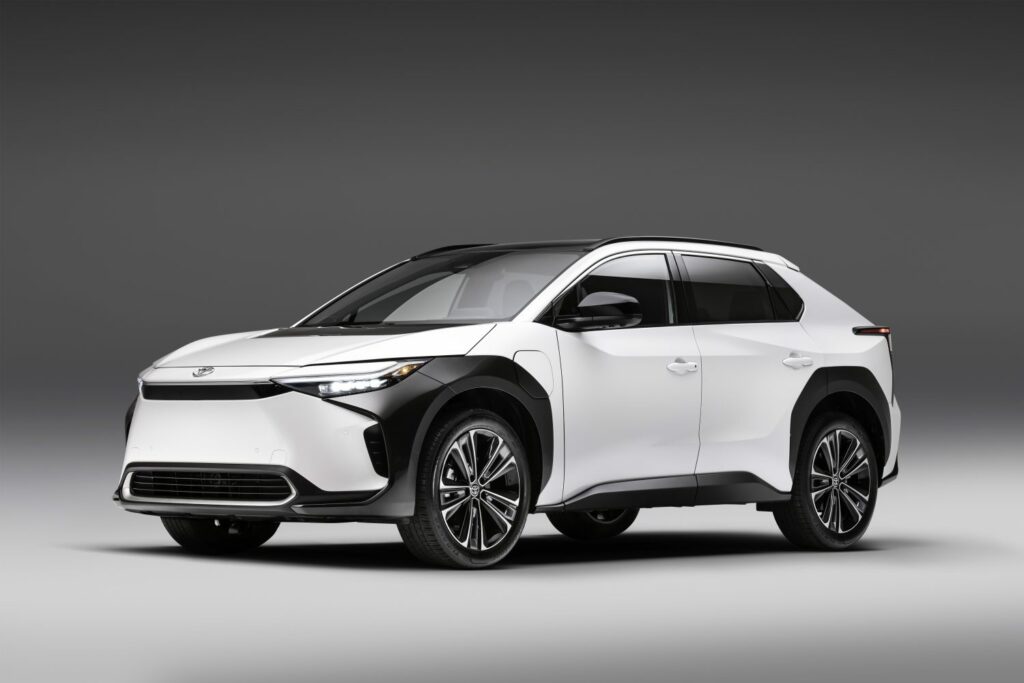
In 1995, Toyota made headlines when it unveiled a concept car at the Tokyo Auto Show that was powered by both combustion and electric motors. This concept would go on to become the first mass-produced hybrid, the 1997 Toyota Prius. 25 years later, the hybrid pioneer is lagging behind other automakers in the push to further electrify. As recently as this year, Toyota and Lexus have frequently trash talked EVs. From claiming that they prefer “self-charging hybrids” (there’s no such thing!!!), to investing heavily in the incredibly inconvenient hydrogen-powered Mirai, Toyota has kicked the ball down the road for the last decade when it comes to electrification. But things started to accelerate in 2019 when Toyota expanded its existing partnership with Subaru to include the development of a battery electric vehicle.
At the 2021 LA Auto Show, we got our first look at the fruits of the Toyota-Subaru collab. On Toyota’s side, the result is a compelling EV with an eye-rolling name: the 2022 Toyota bZ4X. Apparently bZ stands for beyond zero, as in zero emissions. Subaru simultaneously unveiled its first all-electric all-wheel drive vehicle, the Solterra.
So Toyota is off to the races. What’s next in their roadmap to electrification? In October, Toyota announced plans to invest $3.4 billion in US-built batteries through 2030. Globally, Toyota says it’s investing $13.5 billion in battery development, with the headline goal of reducing battery costs by 50% by 2030. They’ve also established a partnership with Panasonic for battery R&D. Toyota plans to expand the Beyond Zero line of cars into seven different models by 2025, and an additional eight EVs will be introduced into other Toyota segments. If all goes as planned, Toyota’s lineup will be hardly recognizable five years from now.
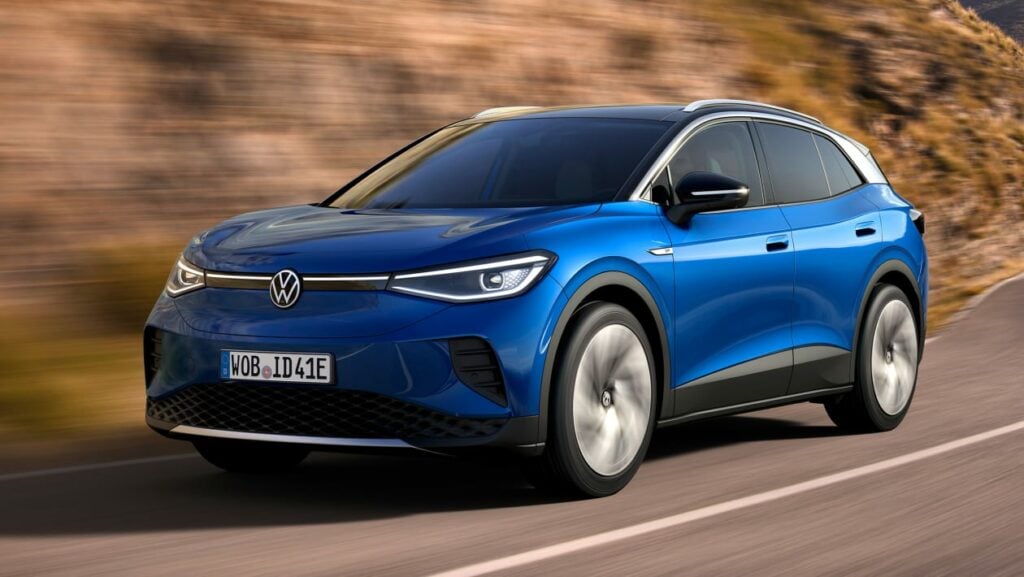
In Europe, German EVs are arguably the face of electrification. While it’s true that Tesla and Asian EVs are quickly making inroads, Volkswagen, Audi and Porsche are doing very well in the European EV market. The irony? Volkswagen Group’s electric leadership came directly out of the dieselgate emissions scandal. Following the debacle, VW intended to rebrand itself as an automaker committed to righting wrongs and going green once and for all. And to a large extent, the rebranding has been a success.
VW Group has allocated over $86 billion for technology development between now and 2025. CEO Herbert Diess says that nearly all of it will be spent on electrification initiatives. In fact, he recently shared with CNBC that VW aims to have at least 50% of total vehicle sales to be electric by 2030.
Here in the US, VW has already started converting a large portion of its Chattanooga, Tennessee factory into a production facility for American-made ID.4 electric crossovers. The conversion will cost about $800 million. The Chattanooga factory recently celebrated its 10th anniversary, and over 3,800 people are employed there.
The Porsche Taycan has seen immense success and rave reviews. It’s the top-selling non-SUV Porsche of 2021, despite a sticker price that stretches from $94,000 to $188,000. Porsche, a subsidiary of Volkswagen Group, has led the electrification of luxury performance in Europe. They’re also investing in a network of public fast-chargers and destination chargers. At least 7,500 charging points are going to be available worldwide by 2025. This is all part of Porsche’s plan to spend about $17 billion on electrification through 2025.
BMW has been a bit of an internal combustion holdout. Not long ago, CEO Oliver Zipse declared that gas engine development will continue and that demand for internal combustion “will remain robust for many years to come.” However, even Zipse says that he expects BMW’s EV sales to grow by at least 50% year-over-year for at least the next few years. By 2025, they expect 25% of BMW’s sales to be EVs. What about investment? The latest tally shows BMW has plans to invest $23.8 billion in battery technology and EVs. They seem to be dabbling in hydrogen fuel cells too, a technology that has yet to show scalable promise.
Mercedes-Benz maker Daimler announced in July that it intends to invest $47 billion in electrification by 2030, with the explicit goal of taking on Tesla. Daimler says that the overhaul of operations could result in job cuts. Most notably, the transition will result in an 80% drop in combustion engine investments by 2026, just five years from now. In essence, Mercedes-Benz is going all in for EVs. Daimler recently purchased British electric motor engineering firm YASA Limited, and is making strides towards battery development.
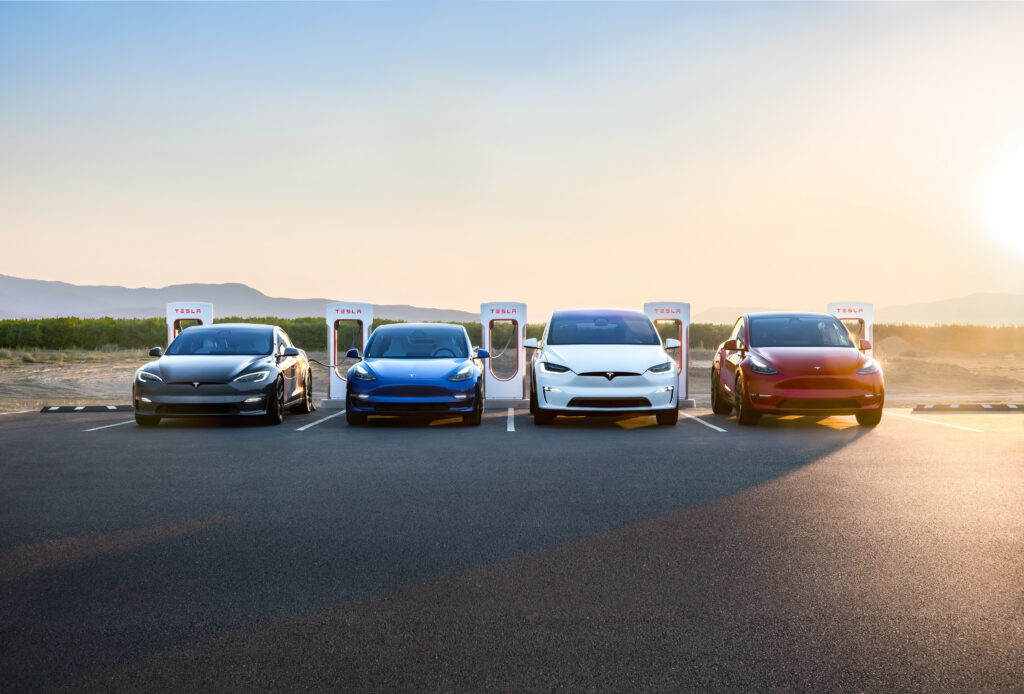
Legacy OEM’s have a solid shot at catching up to Tesla, but there’s also the possibility that we’re witnessing a great realigning of sorts in the North American auto industry. As it stands today, Ford, Volkswagen Group, GM and Hyundai-Kia are best positioned to dominate the EV industry alongside Tesla, but all OEM’s are throwing money and infrastructure at electrification. What do you think the outcome will be? Will the big three and German giants be as powerful in a decade as they are now? Only time, money and a battery-powered arms race will tell.